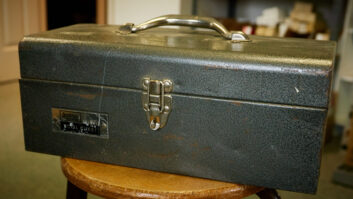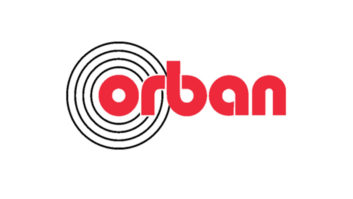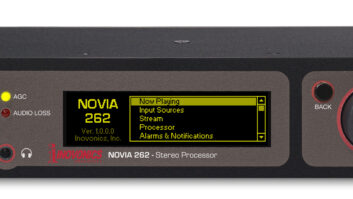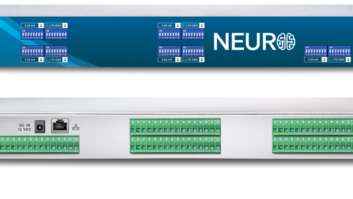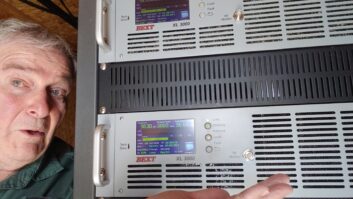25-Seven’s Unit ‘Pauses’ Broadcasts, Eases Joins, Allows On-The-Fly Compression Changes
When I was asked to review the Audio Time Manager by 25-Seven Systems Inc. I thought, “Well, this is great. Something to time-squeeze programming to slide in another commercial or two; and something we wouldn’t use at WOR.” I was wrong.
Geoff Steadman, president of 25-Seven Systems, changed my mind.
“I suppose you could use it for that purpose,” he said, “but that’s not how it is intended to be used.”
The 25-Seven Audio Time Manager is a 2 RU digital box. The front is laid out logically, with the common controls such as record, hold and play on the right. Toward the center and left are an LCD screen for manipulating the ATM through its various menus; five soft keys near the LCD screen to allow menu selections; and a set of four arrow buttons to move through and around various menus.
The back contains XLR connectors for analog audio input and output, and XLR connectors for AES or SPDIF signals, something that is very nice. Analog reference levels can be adjusted easily through the menus. The back also has a DB-25 connector for GPIOs (eight general-purpose inputs and eight outputs), RS-232 data for remote control of the ATM, and an Ethernet jack for software updating, synchronization of time and secure remote control through an internal Web server.
Installation is fairly straightforward. Stereo audio connections are obvious, as is the connection if you use a digital signal. Once the unit is in the rack, it is simple to configure the networking parameters and NTP time-server parameters. If you do not have an Internet connection available, you can set the time of day easily on a menu screen. And you do need to set up the time of day.
‘We interrupt this program …’
So what are the uses for the ATM?
Product CapsuleTHUMBS UP:
Menus are easy to navigate, understand
On-the-fly time compression changes
Embedded web page
GPIO capabilities
Inclusion of AES, S/PDIF audio I/O
THUMBS DOWN:
External power supply
PRICE: $7,950
CONTACT: 25-Seven Systems in Boston at (888) 257-2578 or visit www.25-seven.com
Perhaps your station carries baseball games. Nothing frustrates a listener more than having the right fielder going back for the game-winning catch, only to hear that the play-by-play has been interrupted by an EAS alert or a network news bulletin.
The ATM can put the ball game into “pause” mode, much like the TiVo does for your favorite television program. Say the guy is at the plate ready to swing, but your EAS box takes air for a thunderstorm alert. You can have the ATM sense a closure that the EAS is on the air, and it will start recording. When the EAS system releases, it will start playing back the game exactly from the point where it was interrupted. The ATM will then speed up the play-by-play until you are back in real time.
A better use for the ATM would be if a network talk program were interrupted. One of a station’s big fears is losing a commercial break during network programming if normal programming is interrupted. The ATM can be triggered to start recording at the moment of interruption, and through its GPI port, also will “record” any closures received from the network.
You can define the functions of various GPIs and GPOs easily using the front-panel menus. Once the interruption has ceased, the ATM will proceed to play back the interrupted program from the point of interruption and, if a break cue were received while you were away, trigger your automation system to fire the break at the right time in the program. I think that is a cool feature.
The time compression used by 25-Seven is very good. There is no pitch shifting, even at its maximum speed up rate of 20 percent.
You would need to experiment to determine the maximum speed you wish to play back your audio. While the pitch of the voice remains accurate at 20 percent, the playback does sound like the person is talking awfully fast. If your audience knows the speech patterns of your announcers, they may find this annoying. The ATM sounds good and the speed difference is hard to pick up at 5-10 percent shift.
You may be wondering why we need to set the time of day, and why we would want to lock it to an NTP time standard. The reason is that the ATM’s time compression ratio is adjustable on the fly. Let’s say you had a program interruption five minutes before the end of a program that lasts 40 seconds. When the ATM begins playing back, it will tell you on its display the time the system will be back in real time.
Let’s assume you need to hit network news on top of the hour. You can, on the fly, adjust the time compression rate so ATM will come back to real time exactly at the top of the hour. And you can see this calculation directly on the display. No math or time calculations required: the ATM does it all. This is another cool feature.
Yet another use for the ATM would be to provide a local introduction of something like a presidential news conference. We all know these things never start on time, and it usually sounds sloppy when you do join, usually clipping or stomping on the first couple of words. Using the ATM, you could start recording at precisely the moment the president starts speaking, while setting up the scene for your listeners, and then begin playback. A perfect join.
Cut the cord
The embedded Web page is easy to use. This provides full functionality on a Web browser in the studio if your ATM is in the rack room. This is a great feature to prevent running multi-wire cable between rooms.
If, however, you like using remotely mounted buttons to control the ATM’s main functions, you can map these to the GPIOs. There does not appear to be much the 25-Seven folks have left out.
What don’t I like about the ATM? For a unit the size of the ATM, I find it disconcerting that it connects through an external power supply whose pin plug can accidentally be pulled out of the back of the unit. I prefer the “normal” power cords you find on most devices, as these tend to stay put and don’t clutter up the equipment rack with yet another wall wart or external power supply box.
I also find the list price of $7,950 steep. Granted, the ATM is a powerful box with many good features. But smaller radio stations that could really benefit from installing an ATM simply may not be able to afford it.
Overall, I found the ATM to be a tool that is well thought out, with many uses for practical programming problems in a radio facility. The menus are set up well and are easy to navigate and understand, the “normal” controls on the front panel are simple to use, and the ability to change the time compression on the fly is a great idea.
The inclusion of AES or S/PDIF audio ins and outs is something more manufacturers need to consider. The abilities of the GPIOs and the ATM’s ability to record and spit out network break closures blow me away. And it’s nice to see the unit can be controlled via browser, as more and more manufacturers are providing this feature.
If you are looking for a way to make programming interruptions or joins easier and neater on your air, the 25-Seven Audio Time Manager should be strongly considered.






